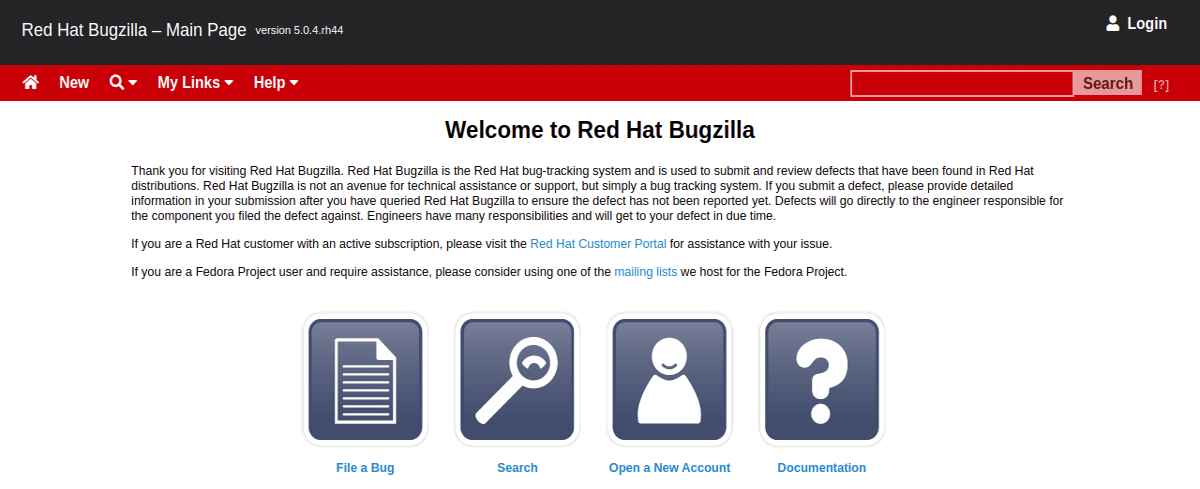
Red Hat unveiled by posting the source code for your review of the Red Hat Bugzilla system, which is an internal fork of Red Hat from Bugzilla which is used to maintain a database of errors, monitor their correction and coordinate the implementation of innovations.
Besides that allows you to organize software defects in multiple ways, allowing the pursuit multiple products with different versions and in turn composed of multiple components. It also allows you to categorize software defects according to their priority and severity, as well as assigning them versions for their solution.
It also allows you to add comments, solution proposals, designate managers to assign the resolution and the type of solution that was applied to the defect, all of this keeping track of the dates on which each event occurs and, if configured appropriately, sending emails to those interested in the error.
About Red Hat Bugzilla
The Red Hat Bugzilla code is written in Perl and is distributed under the free MPL license. The largest projects that use Bugzilla are Mozilla, Red Hat, and SUSE. Red Hat uses its own branch RHBZ (Red Hat Bugzilla) in its infrastructure, complemented with advanced features and adapted to the specifics of development at Red Hat.
Red Hat Bugzilla has been developed since 1998, but until now its development has been carried out behind closed doors, without publishing the change history and without providing access to the repository due to the presence of confidential information in the metadata.
the interface RHBZ carried over to using JavaScript-framework Alertify, which is used to dynamically load data using Ajax and the mechanism for implementing advanced editing functions in forms.
For the design of the table, the DataTables library is used, to generate diagrams in PlotylyJS reports, to organize the work of dialogs and forms, to select and to manage Font Awesome Free fonts.
Publishers also use the Bugzilla extensions from Bayoteerssuch as BayotBase, AgileTools, and TreeViewPlus to display dependency information and manage group work.
The original Bugzilla code base has recently been limited to just a bug fix. A project to redesign the Bugzilla interface, started several years ago, has been abandoned for more than a year. The main activity is now concentrated in the repository with a branch of Mozilla, which continues to develop rapidly.
Red Hat Bugzilla is now open source
Now RHBZ has become a standalone open source project, whose code is completely open under the MPL-2.0 license and is available for external use.
As a basis, RHBZ used the current Bugzilla source tree, on which the necessary plugins were supported. Due to the presence of confidential data in the commit notes, the open version of RHBZ se publishes as a large patch of 1174 changed files, 274307 lines added and 54053 lines removed at the top of Bugzilla 5.0.4 sources.
RHBZ began as an internal fork of Red Hat in 1998 and has undergone many changes over the next two decades. The confirmation history cannot be made public as the confirmation messages and meta information contain sensitive data.
The code itself can be made public, but for the above reason it is simply a one-time commit on the upstream Bugzilla code. Red Hat retains an internal copy of the source with the history.
For those who need an explanation of these or other changes, they recommend contacting Red Hat employees.
In addition to the original Bugzilla code base, RHBZ also uses elements from a branch compatible with the Mozilla infrastructure.
Finally for those interested in knowing more about it About the Red Hat Bugzilla code release and / or are interested in reviewing the source code or getting a copy of it, you can check the details and source code In the following link.